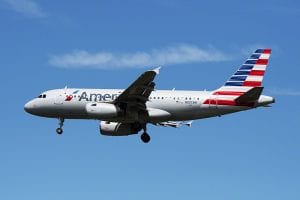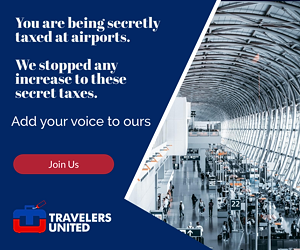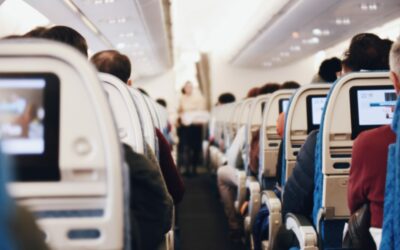The airlines want to solve pilot shortages and high operating costs by having just one pilot flying their planes instead of two. It’s a questionable strategy considering safety and handling inflight emergencies.
 Airlines in the US and Europe are pushing to use single-pilot operations for their scheduled commercial flights. This is the solution the airlines want as they face an acute shortage of pilots and high operational costs.
Airlines in the US and Europe are pushing to use single-pilot operations for their scheduled commercial flights. This is the solution the airlines want as they face an acute shortage of pilots and high operational costs.
Moving to a single pilot operation would mean significant safety issues must be overcome. Two pilots in the cockpit provide redundancy and workload sharing, enabling the pilots to stay as fresh and alert as possible throughout their flights.
Over the next decade, the average pilot shortage will be 17,000 pilots.
 While the shortage of qualified pilots for scheduled commercial airlines has eased, it is still substantial. In 2022, the airlines cut back service by culling routes with over-capacity and less popular destinations. According to experts at Oliver Wyman, there will be a severe shortage during the next ten years averaging 17,000 pilots, with a gap in 2026 of about 24,000 pilots.
While the shortage of qualified pilots for scheduled commercial airlines has eased, it is still substantial. In 2022, the airlines cut back service by culling routes with over-capacity and less popular destinations. According to experts at Oliver Wyman, there will be a severe shortage during the next ten years averaging 17,000 pilots, with a gap in 2026 of about 24,000 pilots.
If efforts to close the gap aren’t successful, the pilot shortage will hold back schedule and route expansions and critical service to smaller airports across the U.S. and elsewhere in the world.
Baby boomer pilots are retiring, and the military pool of pilots has been shrinking, making pilot recruitment difficult and essential for the airlines.
According to the May 2021 Occupational Outlook Handbook from the Bureau of Labor Statistics, the median annual wage for airline pilots, copilots, and flight engineers is $202,180. Senior captains earn considerably more. In addition to annual earnings, pilots have health, life, and disability insurance and retirement plans.
Recruiting future airline pilots at salaries like that wouldn’t be hard. The problem is that many pilots from the “baby boomer” generation are retiring or about to retire. In addition, there’s a smaller candidate pool coming from military pilots. The Pentagon has moved to unmanned drones and other air defenses, training fewer pilots. The airlines will have to find other creative ways to recruit increased numbers of pilots, or they will have to train them directly.
To offset pilot shortages and operating costs, the airlines want to use just one pilot for short-haul flights and only two for long-haul flights with no relief pilots on board.
To avoid recruitment problems, for shorter flights, the airlines want just one pilot in the plane, but for the long haul flights that currently require more than two pilots, they want just two pilots, with each periodically resting during the flight, outside of the cockpit, leaving just a single pilot at the controls while the plane is at cruising altitude.
These concepts scream out to have serious questions answered.
Evidence shows that major emergencies are difficult to handle, even for two pilots, and that mentoring junior pilots is effective.
Can a single pilot handle significant emergencies?
That question brought to mind Air France Flight 447 from Rio de Janeiro to Paris in 2009. The plane was cruising at 35,000 feet. The captain rested in the cabin while two less experienced pilots were at the controls. The copilots got faulty speed readings. The plane went into a severe stall. It took the captain about 90 seconds to reach the cockpit, but it was too late. The plane hit the water within three minutes, killing all on board. The two pilots couldn’t handle the emergency. Perhaps the plane might have been saved if the captain had been there. I can’t imagine a rational person being willing to have just one pilot to face serious emergencies, mainly when we see below how two pilots’ teamwork can save lives.
Does it make sense for the airlines to eliminate essential mentoring of junior pilots by senior captains when they are paired together on flights?
Junior pilots with the requisite training and flight hours are ready to handle day-to-day ordinary flight operations, but they’re still raw and not battle-tested in real-world emergencies. This is why junior pilots get paired with experienced captains. There is a limit to what can be learned in a simulator. In a single pilot operational system, the mentoring will end. The airlines have not found a substitute. Simulator training can help you learn what to do but can’t simulate the fear and immediacy of dangerous emergencies if you foul up. Mentoring is still essential.
If flying alone, a pilot with serious mental health problems would seem more dangerous to flight safety.

I think we know the answer to this one. Germanwings flight 9525 was a flight from Barcelona to Düsseldorf. On March 24, 2015, the plane was deliberately crashed by its copilot, who had been treated for suicidal tendencies. He got the opportunity because the pilot left the cockpit when the plane reached cruising altitude and was locked out. I don’t think it’s clear that the airlines and governmental aviation safety agencies have ensured this can’t happen again. With only one pilot, the scenario would be easier to repeat.
Evidence has shown that it would be difficult for one pilot to handle the work of two successfully and that two pilots working together can produce a miracle.
Can a single pilot quickly and accurately adapt to the changing conditions on most flights to mitigate safety and operational risks?
While it’s a one-in-a-million situation, the quick thinking in an emergency by Captain Chesley Sullenberger and First Officer Jeffery Skiles clearly shows how experience, thoughtful, quick discussion, teamwork, and adaptation can overcome terrible survival odds, to safely fly a commercial jet when they brought US Airways flight 1549 down on the Hudson River in New York City with everyone on the plane surviving.
Can a single pilot do the work of two pilots while in flight?
Typically on a scheduled commercial flight today, one pilot is actively flying the plane, and the other is monitoring the instruments, state of the plane, and the pilot flying the plane. If nothing else, who will check on the pilot if they are alone? Can a computer accomplish that task? We are far from that capability, if we’ll ever get there.
Can a single pilot handle the workload usually handled by two pilots?
While one pilot is physically handling a plane, the two pilots share the intensive work of taxiing, takeoff, and landing phases of each flight, including ensuring that they carefully follow the instructions of ground and air controllers to ensure the safety of the plane and everyone in it. Considering the numerous mistakes we’ve already seen in the first three months of this year in the U.S., with too many runway incursions, the workload is tough for two pilots. It’s hard to believe that, at this time, one pilot can regularly do it all alone.
Bottom line: Single-pilot operations of scheduled commercial aircraft make no sense
I think it’s clear that for the foreseeable future, single pilot operations of scheduled commercial aircraft make no sense, as the reduction of safety will be significant. The European Union Aviation Safety Agency (EASA) agrees. They’ve ruled out the aviation industry’s push for single pilot crews starting in 2030. The airlines must stop pursuing this solution for their pilot shortage and high operation costs. They need to pursue instead realistic solutions that won’t compromise safety.

READ ALSO:
Four important advocacy issues to make travel better in 2023
Revel in flower bathing in colorful springtime public gardens
After many years working in corporate America as a chemical engineer, executive and eventually CFO of a multinational manufacturer, Ned founded a tech consulting company and later restarted NSL Photography, his photography business. Before entering the corporate world, Ned worked as a Public Health Engineer for the Philadelphia Department of Public Health. As a well known corporate, travel and wildlife photographer, Ned travels the world writing about travel and photography, as well as running photography workshops, seminars and photowalks. Visit Ned’s Photography Blog and Galleries.



